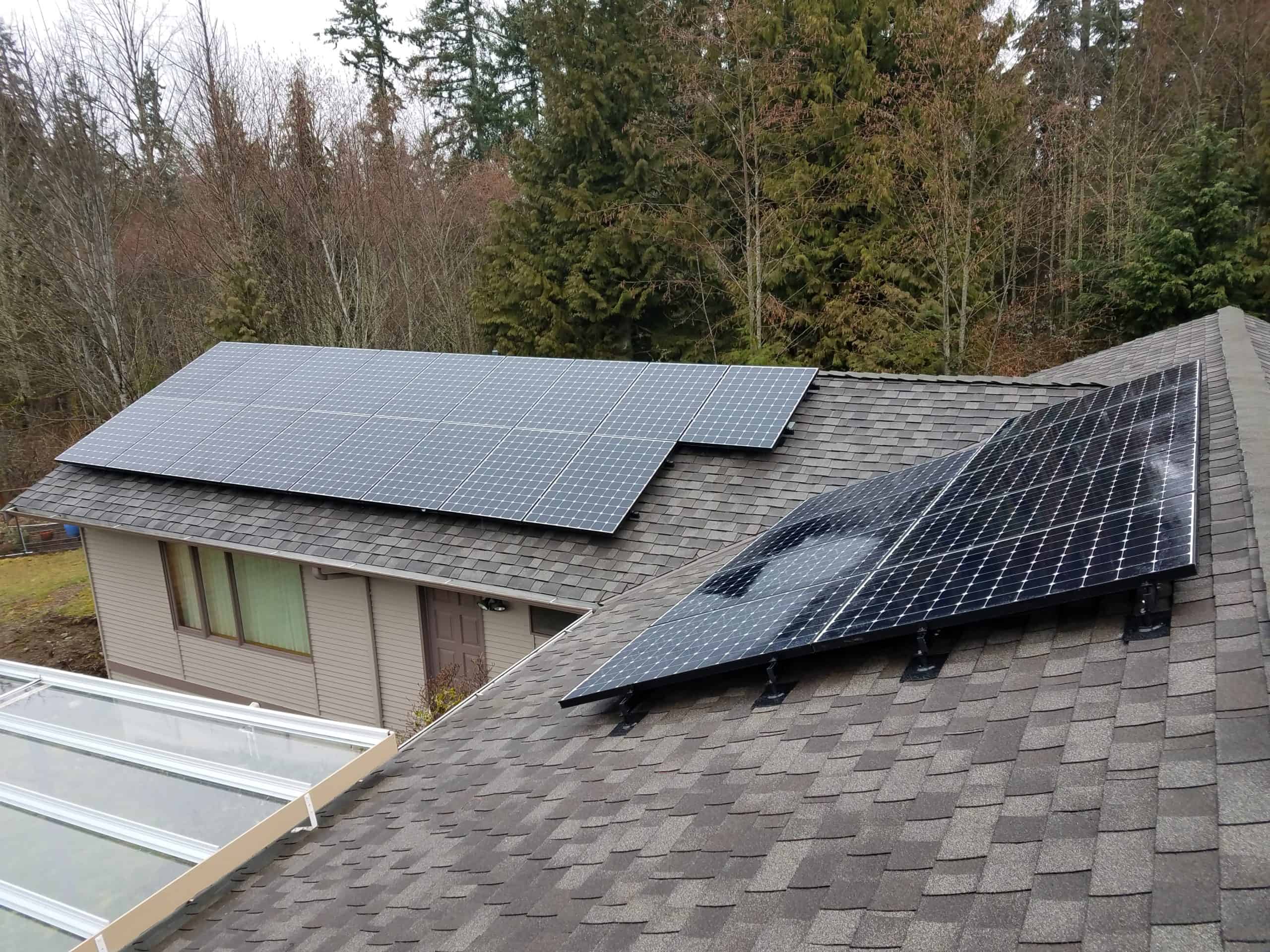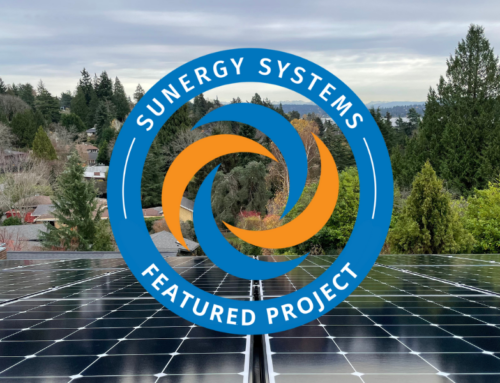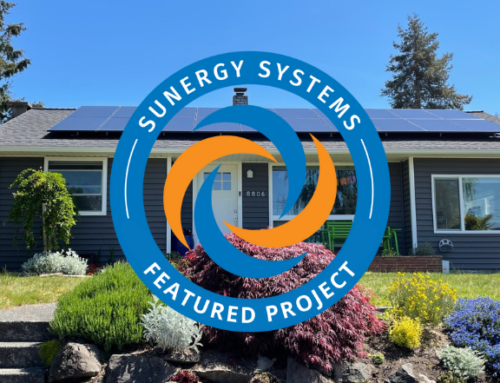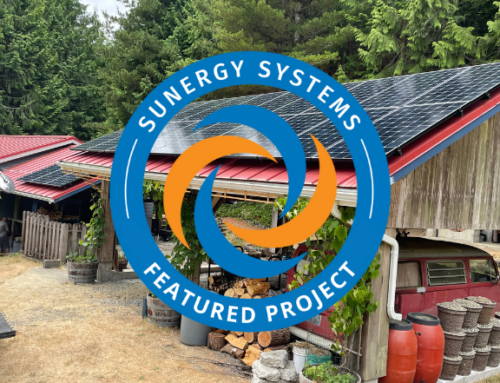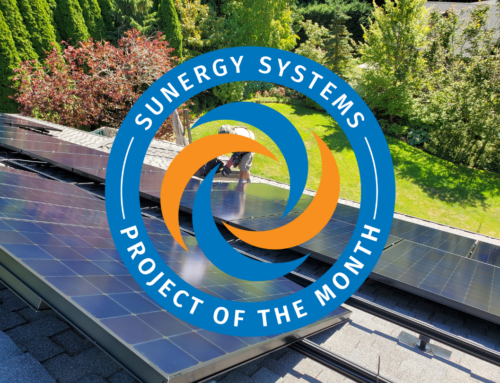For this month’s featured project, we want to introduce you to Sandy! Sandy is a Sunergy System customer. He spent 34 years as a Boeing engineer/manager and has written six novels in the years since (www.sandyspen.com). He and his wife live in a house they designed and built 46 years ago. Read about their journey from Fossil To Sun In Seattle on our blog!
Prior to 2017, my thought of solar power on the Pacific coast boiled down to “Forget it; too many cloudy days and there would be no significant payback through the winter months.” An article introducing net metering changed that. It described how the power company would bank credit for surplus power generated during sunny days to be used to pay for shortfalls on cloudy days. It claimed there were enough clear days in the Seattle area to do that. The frequency of baseball games with the roof open supports that claim.
My spouse and I decided to investigate solar power, and a little internet browsing allowed us to home in on two installers in our area, each with over ten years of experience. We contacted Sunergy Systems first. They sent a man out to survey our situation. He quickly identified optimum panel locations on south- and west-facing roof surfaces. Once on the rooftop, he used a device that measured tree locations and heights that might shade the panels. This data was later fed into a program that computed the expected power generation throughout the year. Past power bills gave an indication of our annual consumption. Relating that to the generation data resulted in a recommendation of 26 panels, with 17 facing south and 9 facing west.
The second installer came to much the same conclusion, working from satellite images. Probably the openness of our roof allowed that shortcut to succeed.
We had a choice between three solar panel manufacturers: a California company (SunPower) on the high end in cost and performance, an Oregon company that was mid-priced, and a Washington company that was the lowest cost and also came with, at the time, the benefit of a higher state rebate. In the end, we opted for SunPower even though data showed it would take ten years to pay back the initial cost. SunPower enjoys a good reputation for reliability and standing behind their products. The higher efficiency of their panels seemed important in our climate.
The cost quotes from the two installers for our configuration were essentially equal. We chose Sunergy Systems simply because they seemed more professional and they had no marginal reviews. I also liked the fact that they are employee-owned, so they all have an incentive to perform at their best. It proved to be a good choice. The two men who did the installation were friendly and clearly competent. Our panels are on roof surfaces facing away from the street. After they were mounted, the man who installed them noticed that their top edge could be seen from the street. Instead of leaving them that way, he insisted on lowering them all to keep them out of sight to please us.
The coup de grace came when the inspector took one look at the control units and said he could see this was a Sunergy installation. He related how they use Sunergy jobs to train new inspectors on how they should be done. Our choice of SunPower was also validated a year later, when a micro-inverter on one of the panels failed. Their automated monitoring detected the failure. Since they had experienced other failures of these components, they had improved the design. They sent replacements for all our panels to Sunergy, who installed them at no cost to us. In fact, it was done while we were out of town since they had no need to go inside. We were and are sold on the Sunergy Systems/SunPower combo.
During the first two years, we banked enough power to cover the winter months. That satisfaction prompted us to look at our gas consumption. We focused on our gas furnace/air conditioner combination when the air conditioner left us baking for four days during a hot stretch. We opted to replace it with a high-efficiency heat pump, which drove our gas bill down to about ten dollars a month. We also replace our conventional water heaters with tankless units.
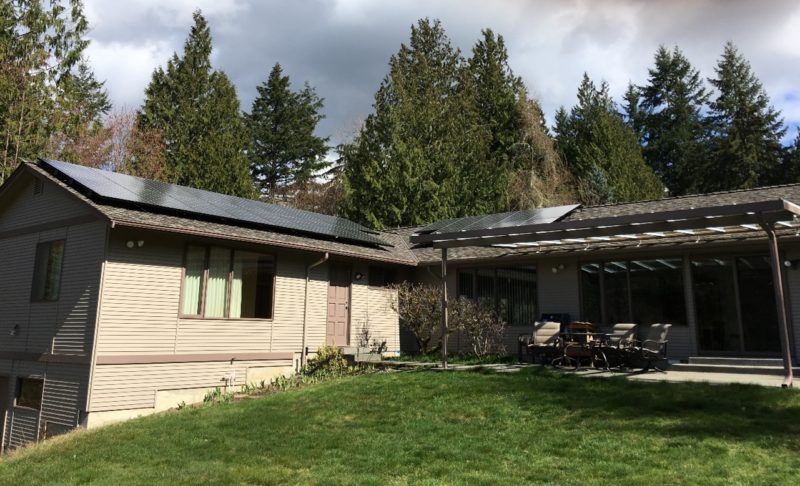
The solar panels were supplying 99% of our energy needs. That is, until we decided to abandon the gas pumps with electric cars: a Tesla and a plug-in hybrid that uses about one gallon of gas per month. The only problem with that, the extra load meant we were no longer banking enough energy during the warm months to get us through the entire year. The irritation of paying for electricity during the next two winters grated on us. The answer was to go back to Sunergy Systems and add ten more panels. The simplest solution would have been to add them on the west-facing roof. However, I had built a detached shop specifically oriented to catch sun earlier in the day and more effectively during winter months. As a side benefit, the panels improved the appearance of the shop’s architectural shortfall. Sunergy Systems handled the added complexity without complaint.
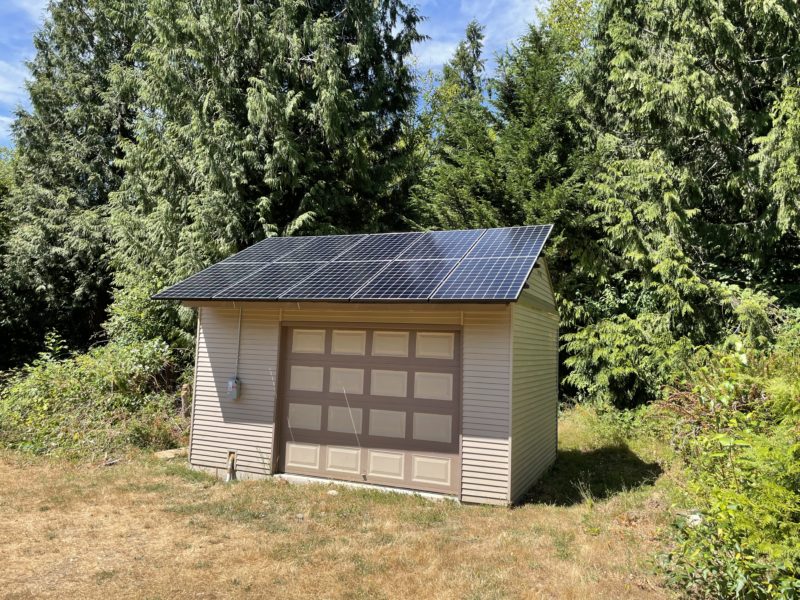
The original panels were on a pace to pay for themselves in ten years. The additional ones will stretch that timeline out, but knowing the sun is covering our energy consumption makes it worthwhile. The enjoyment we feel from producing enough solar electricity to meet our energy needs, together with increased home value, make solar power a wonderful investment.

